7 Cool Animals You Can Find in California Tide Pools
SoCal beach-goers can expect to readily find crabs, snails, and sea anemones. And while these numerous critters are awesome in their own rights, attentive visitors may be rewarded with a sighting of some more elusive species. The comprehensive list of intertidal wonders is a mile long, but these are my favorite animals to keep an eye out for!
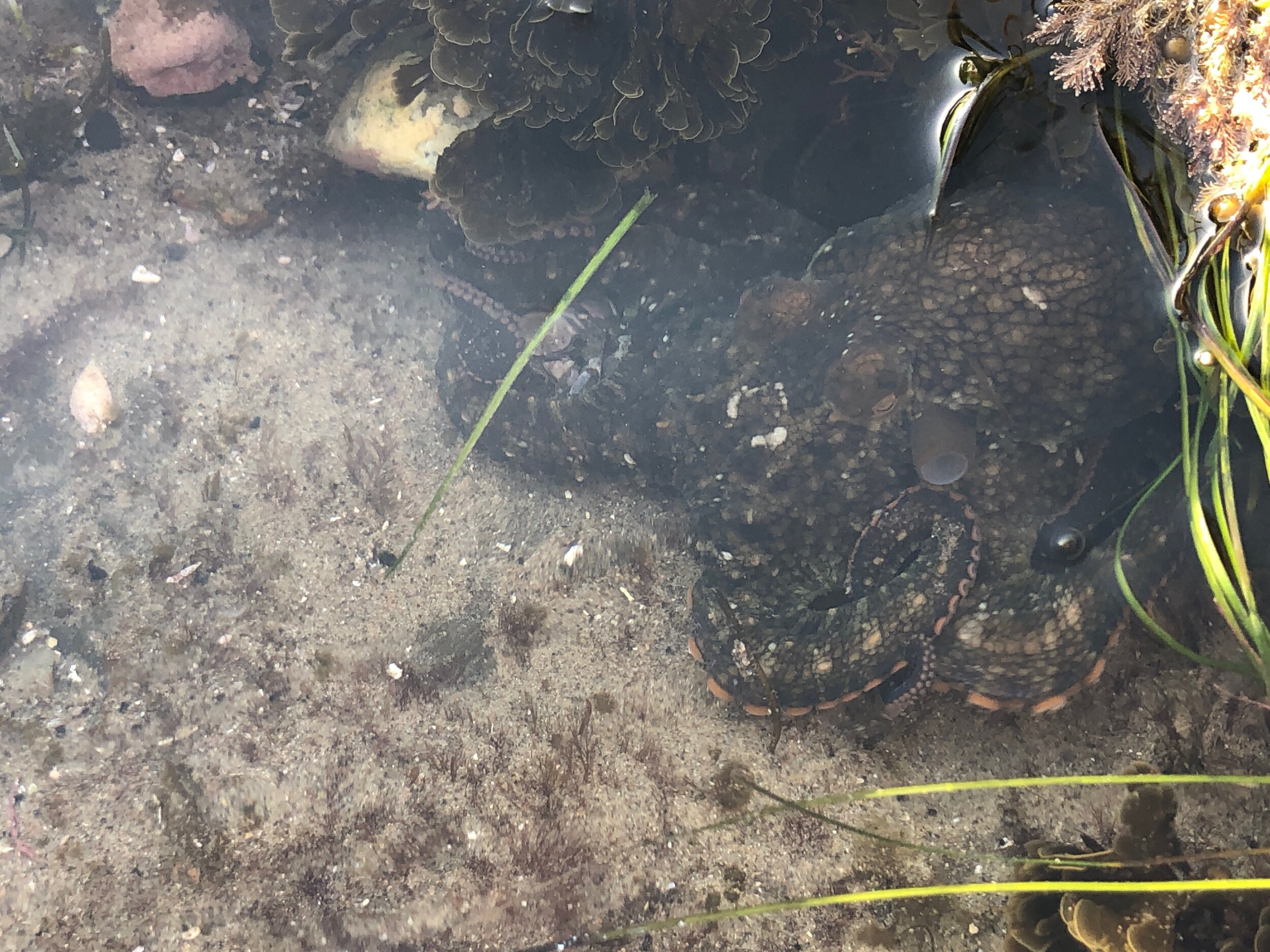
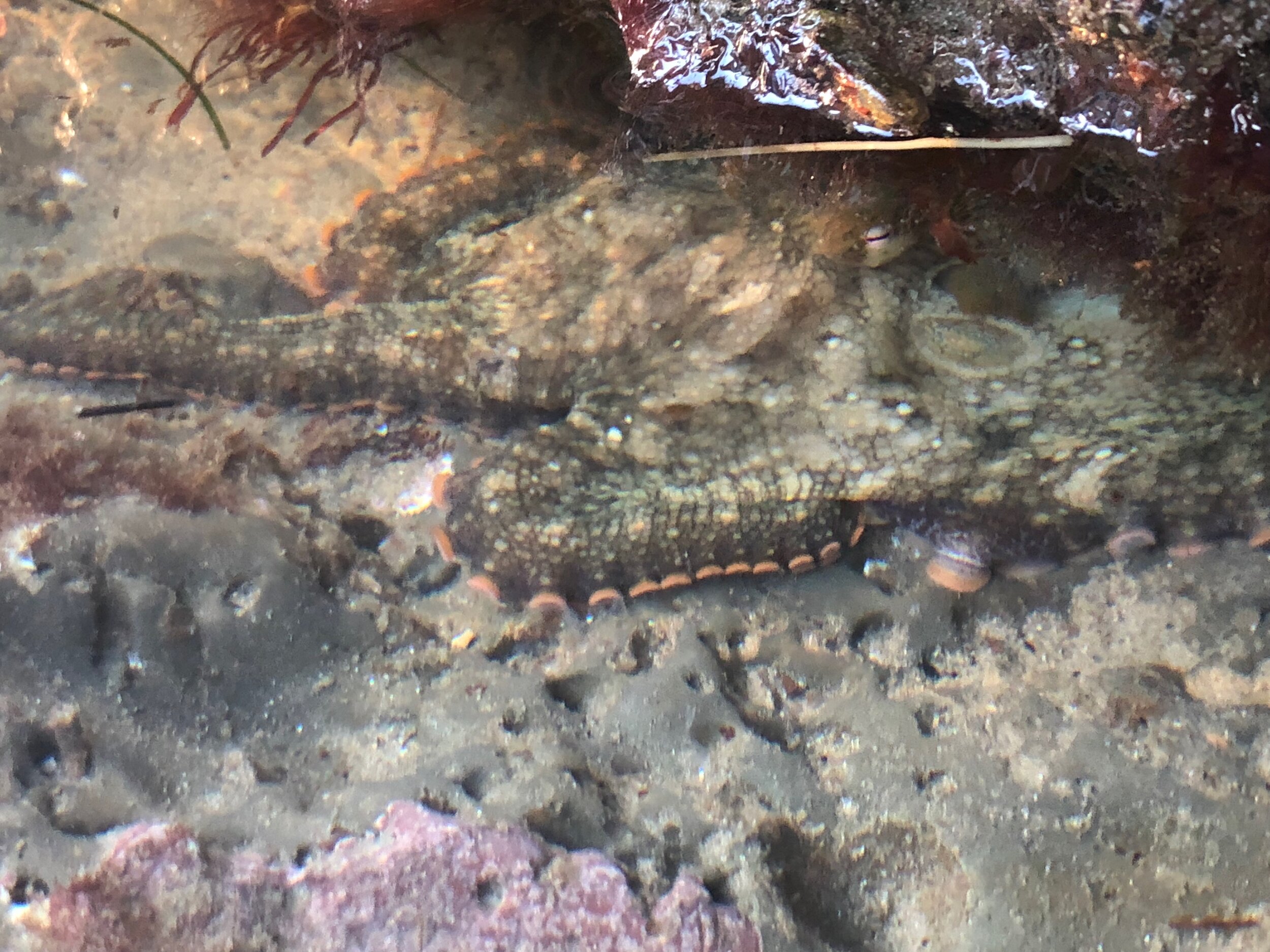
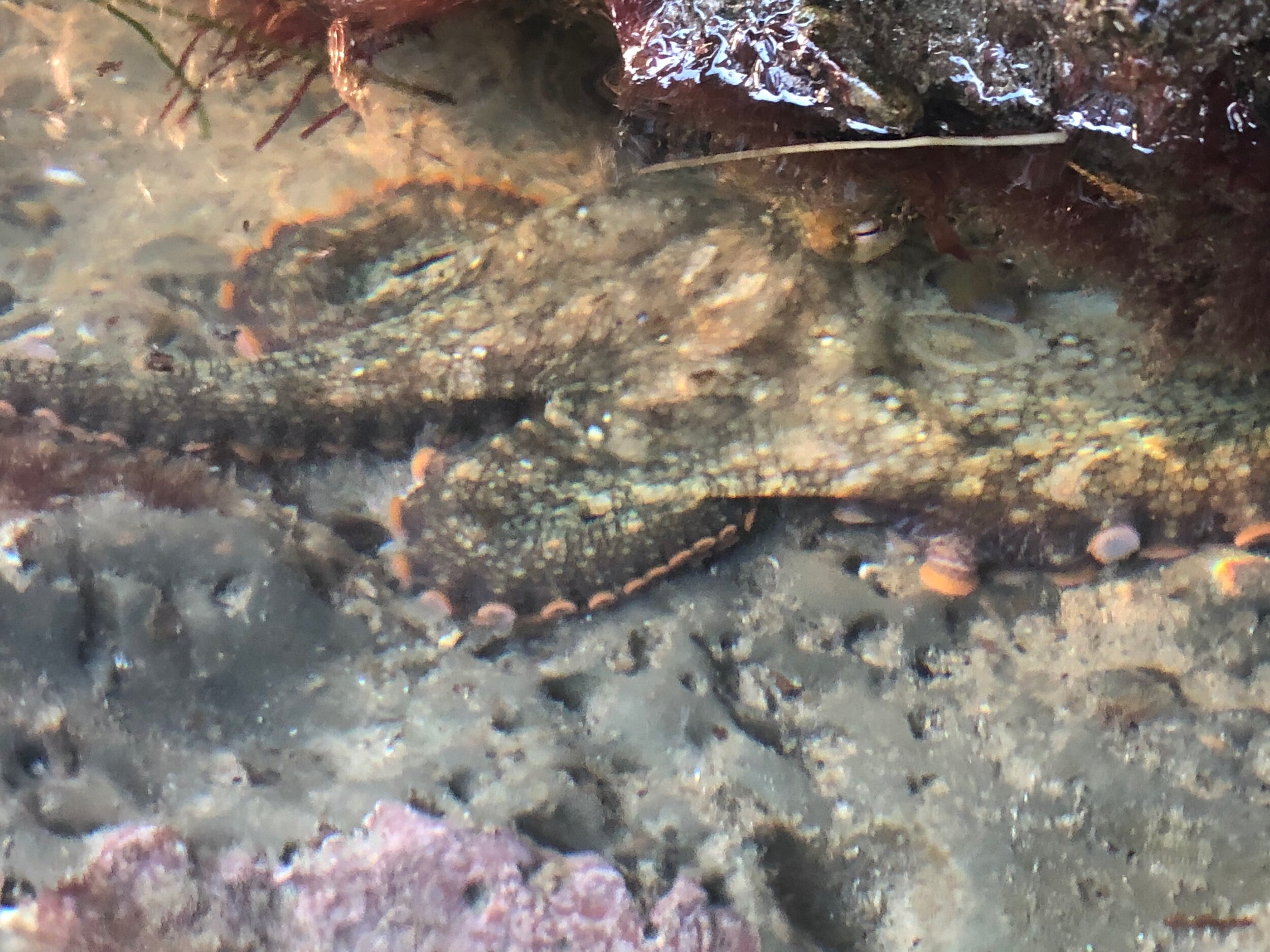
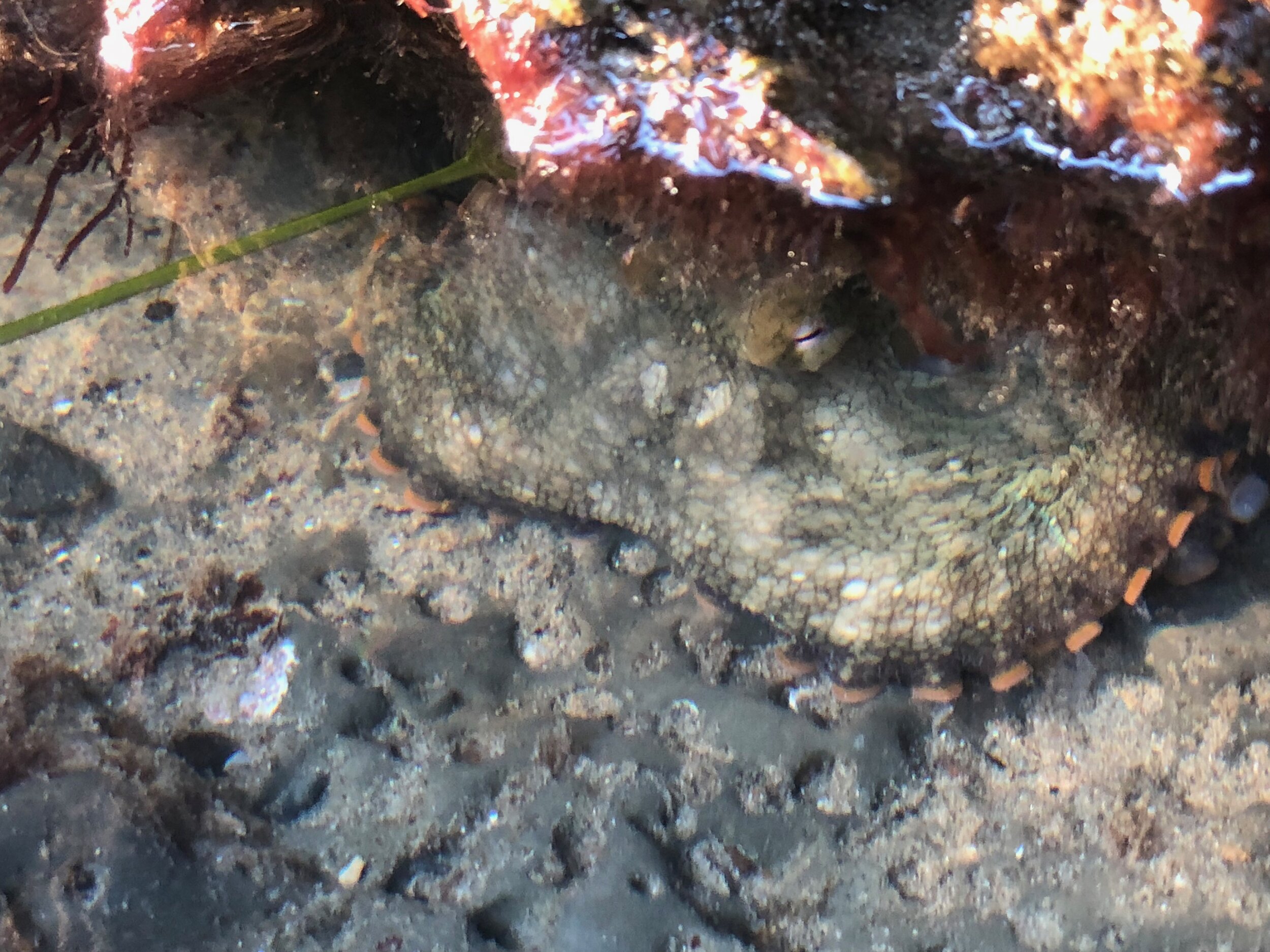
Octopuses
These creatures are shy, surprisingly fast, and good at camouflage, so finding them can be a chore! Your best bet is looking in crevices under large rocks. Notice I did say LOOK, not TOUCH! Don’t go sticking your fingers anywhere you can’t see!
While an octopus looks like a giant head atop 8 tentacles, it’s always trippy to remember that the mantle is not a head but a body - filled with the digestive and reproductive organs! Its small brain is located between the eyeballs, and actually a majority of the neurons are located in the tentacles in a sort of distributed neural network.
Sharks
You don’t have to worry about finding a great white shark near tide pools, but you may catch a glimpse of a leopard shark not too far away! These sharks are bottom-feeders, meaning that they hunt and eat whatever they can find on the ocean floor, mainly crab and mollusks. Their mouths are perfectly placed under their heads and bottom-facing, like rays. All that to say they pose no threat to humans.
Female leopard sharks head for the warm, shallow waters near shore to give birth, so you might spot smaller leopard sharks at low tide.
Shark Eggs
We’ve already covered that leopard sharks give live births, but some sharks lay eggs! Swell sharks (named thus because they can swell their bodies as a mode of defense) are common in California, but it’s unlikely you’ll spot them in the surf. They like to live deeper in the water, are bottom-feeders, and nocturnal. What you are more likely to find is their eggs!
Nicknamed “mermaid’s purse,” you should look for these amongst the kelp washed up on the sand. The egg feels leathery and has four curly tendrils (one coming out of each point - they’ve broken off in this specimen we found). Female swell sharks will lay their eggs amongst the kelp forest and the curly tendrils get caught to the kelp, where the egg will be perfectly camouflaged. After a 9-12 month gestation (!), the baby shark will slip out of the egg and swim away.
While it is possible that a piece of kelp with an active egg may get dislodged and wash ashore, it’s uncommon. All of the shark eggs we’ve ever found have been (thankfully!) empty.
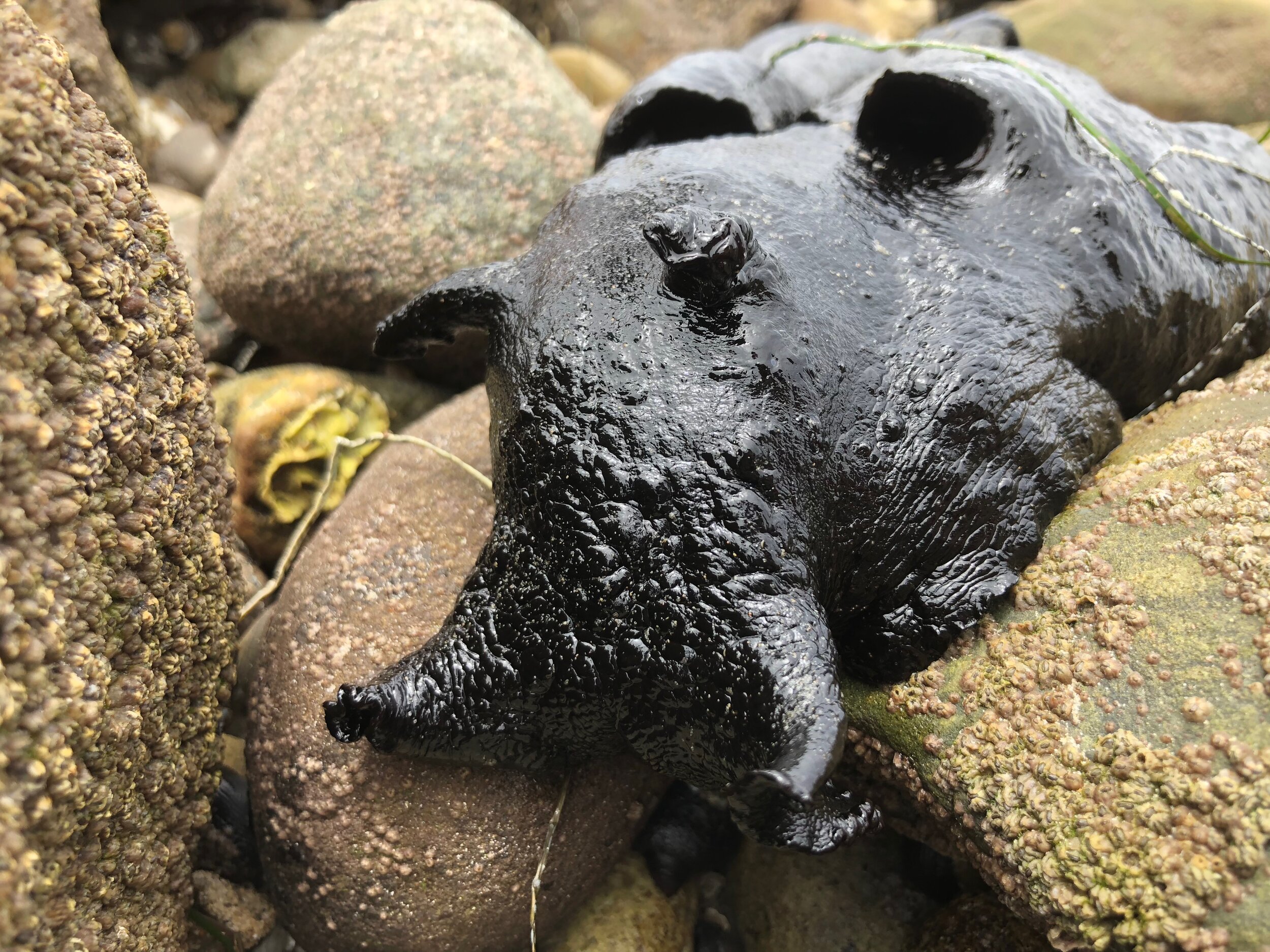
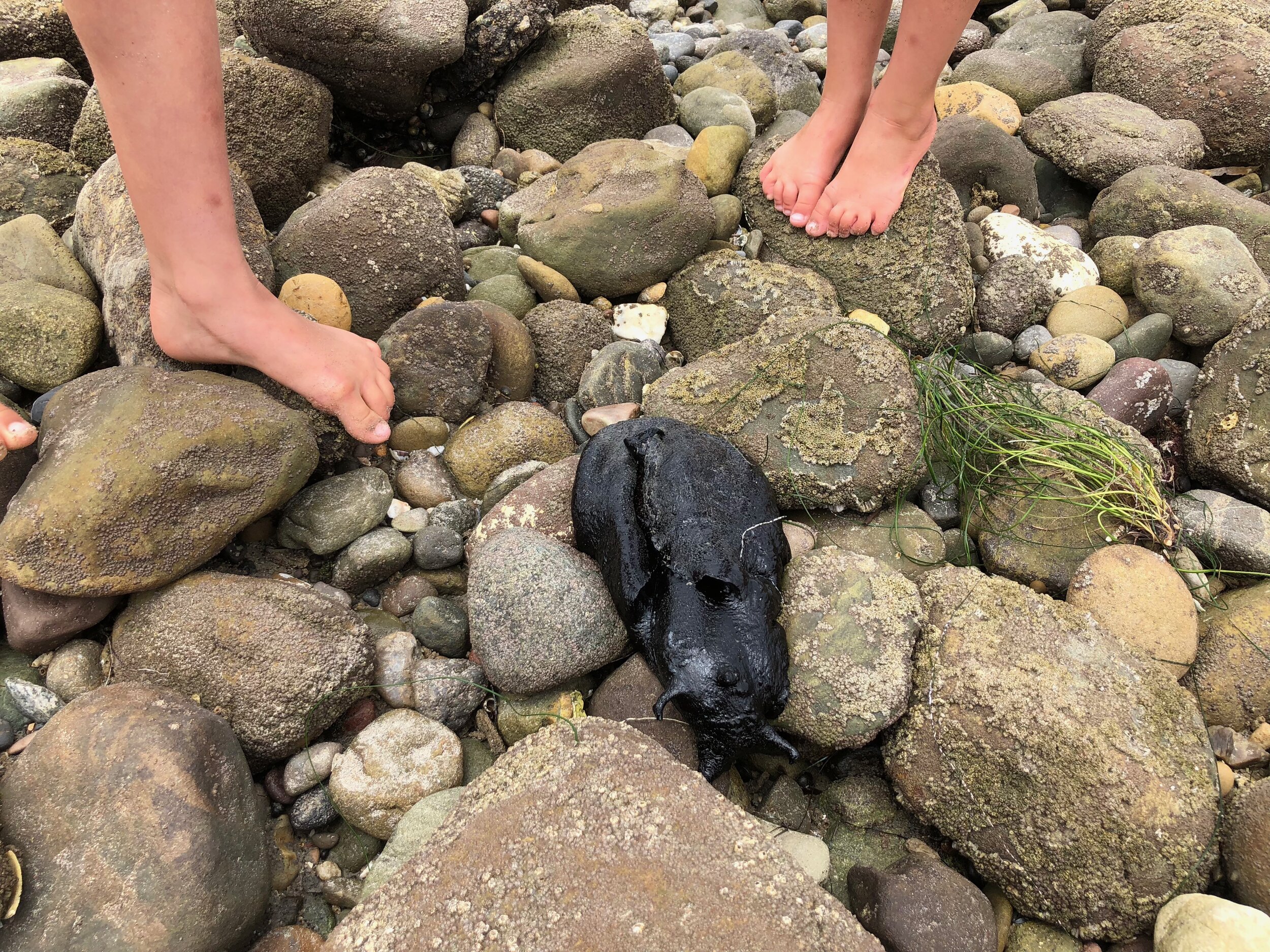
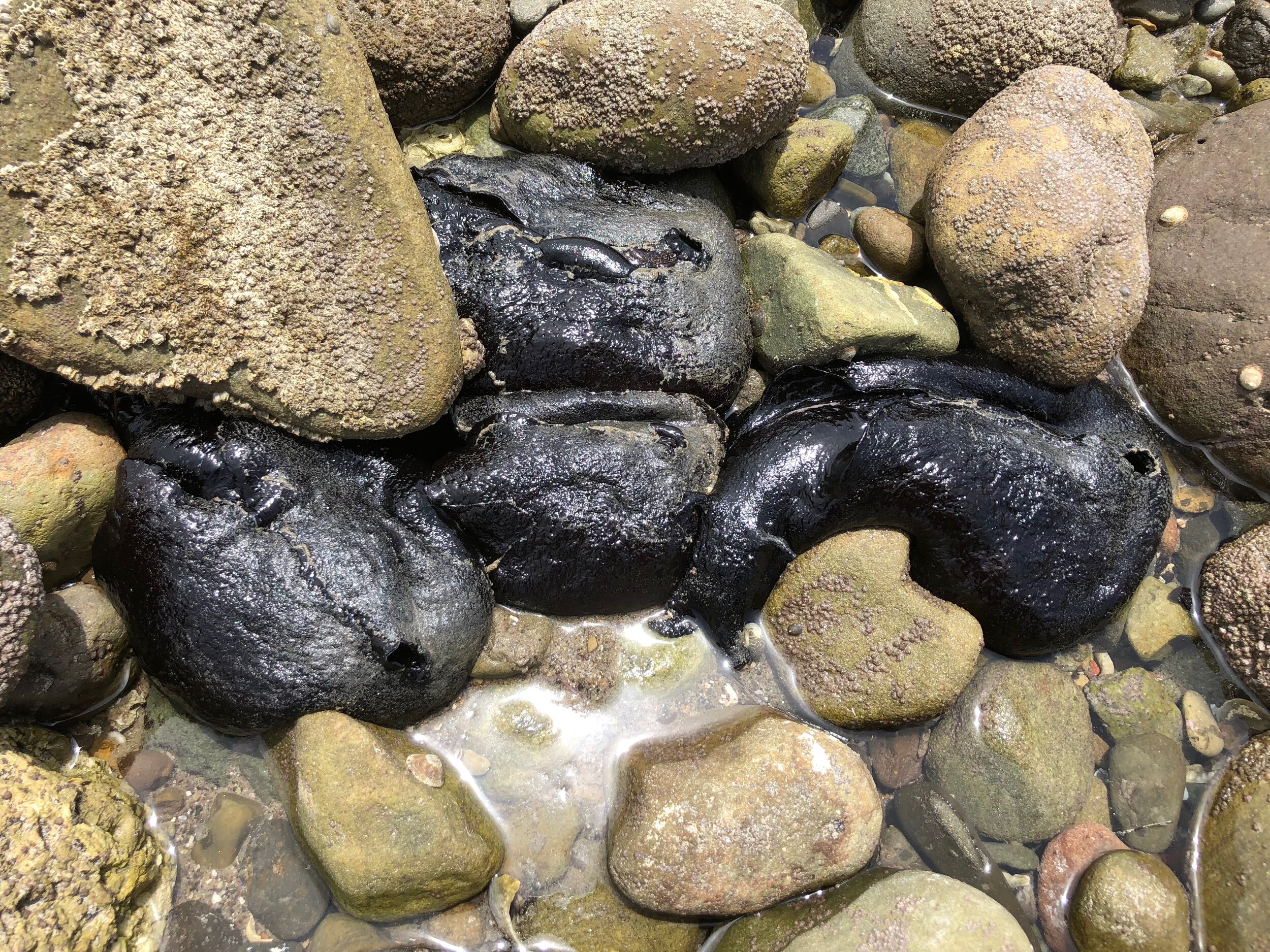

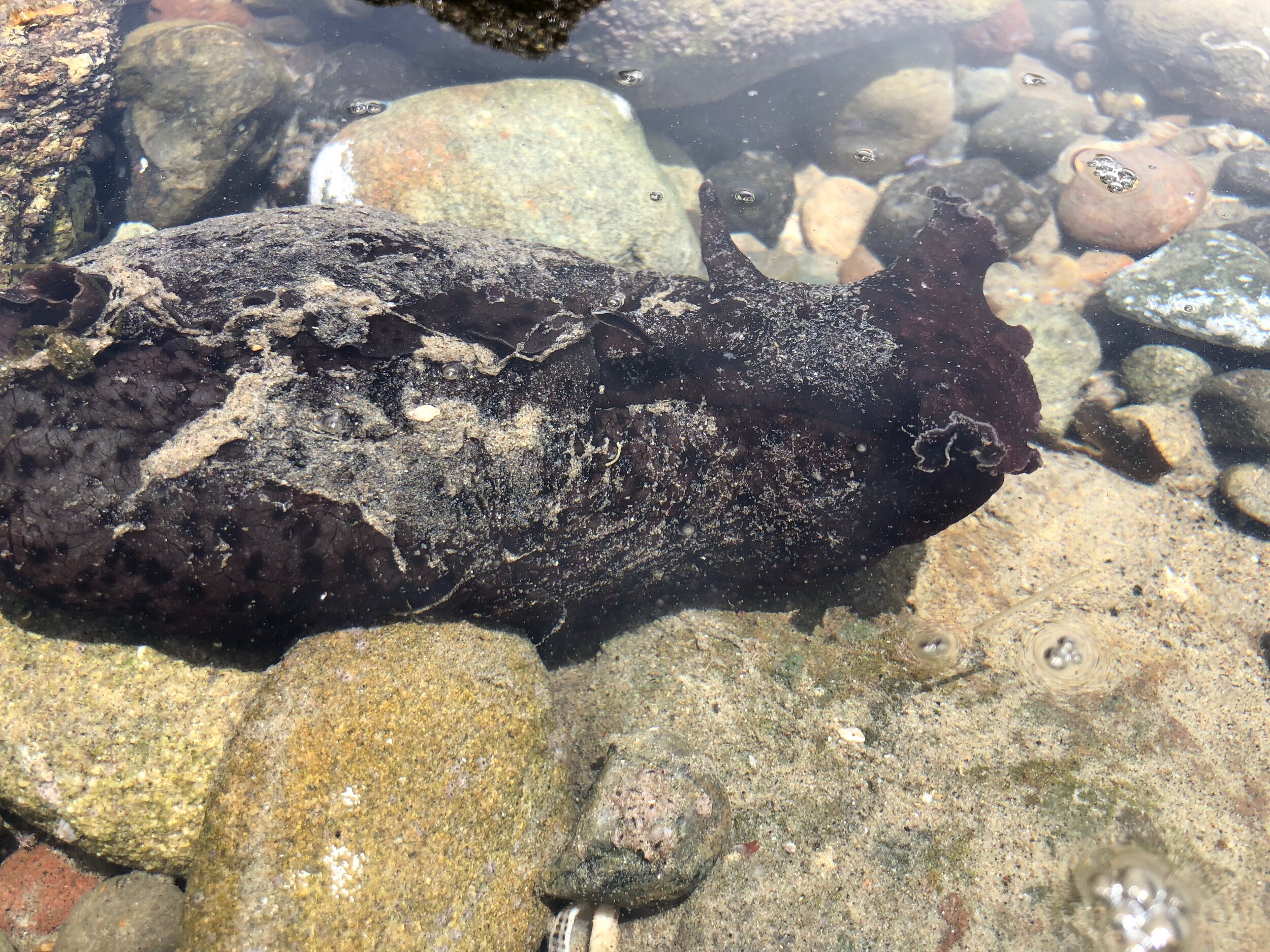
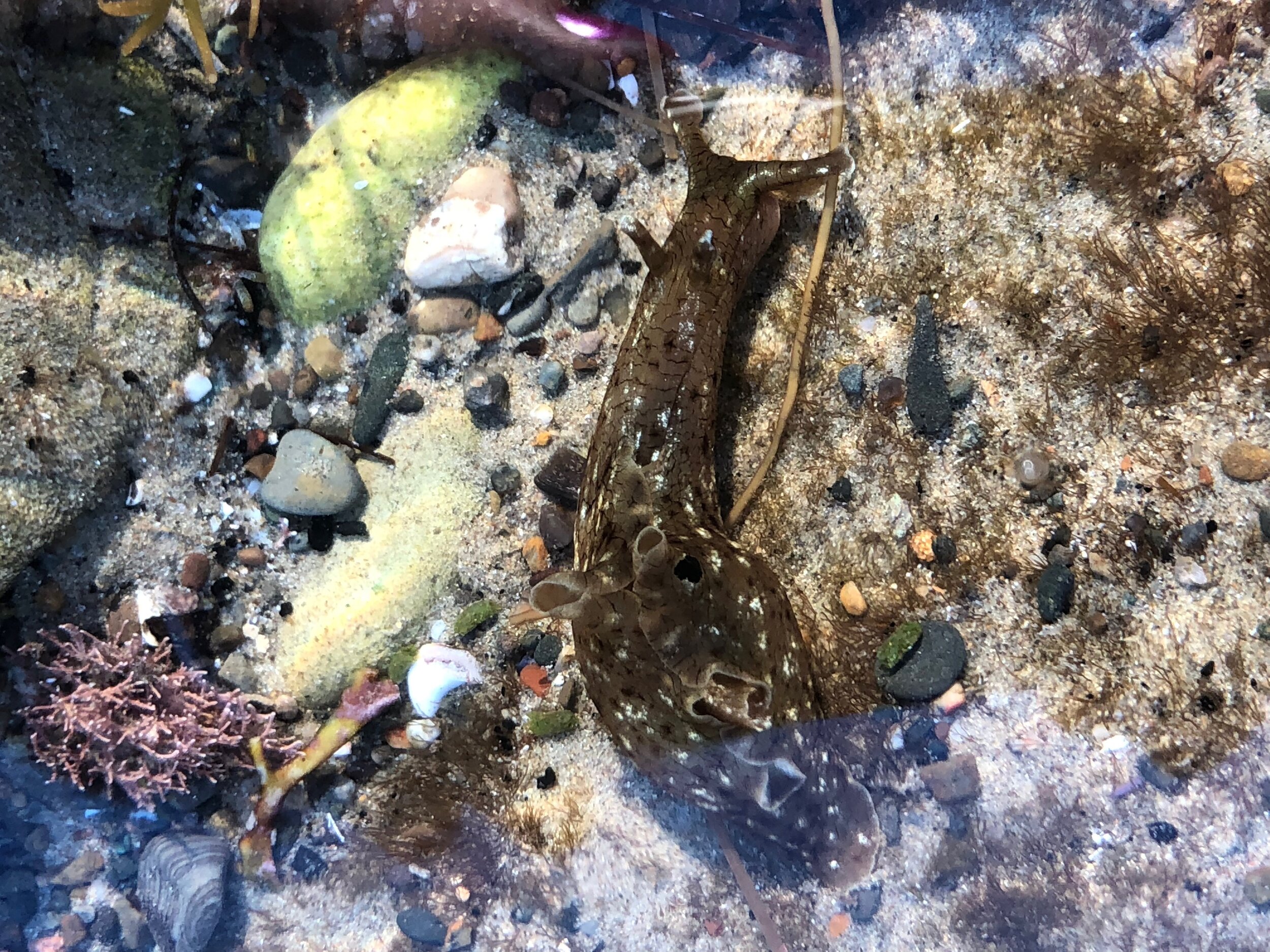


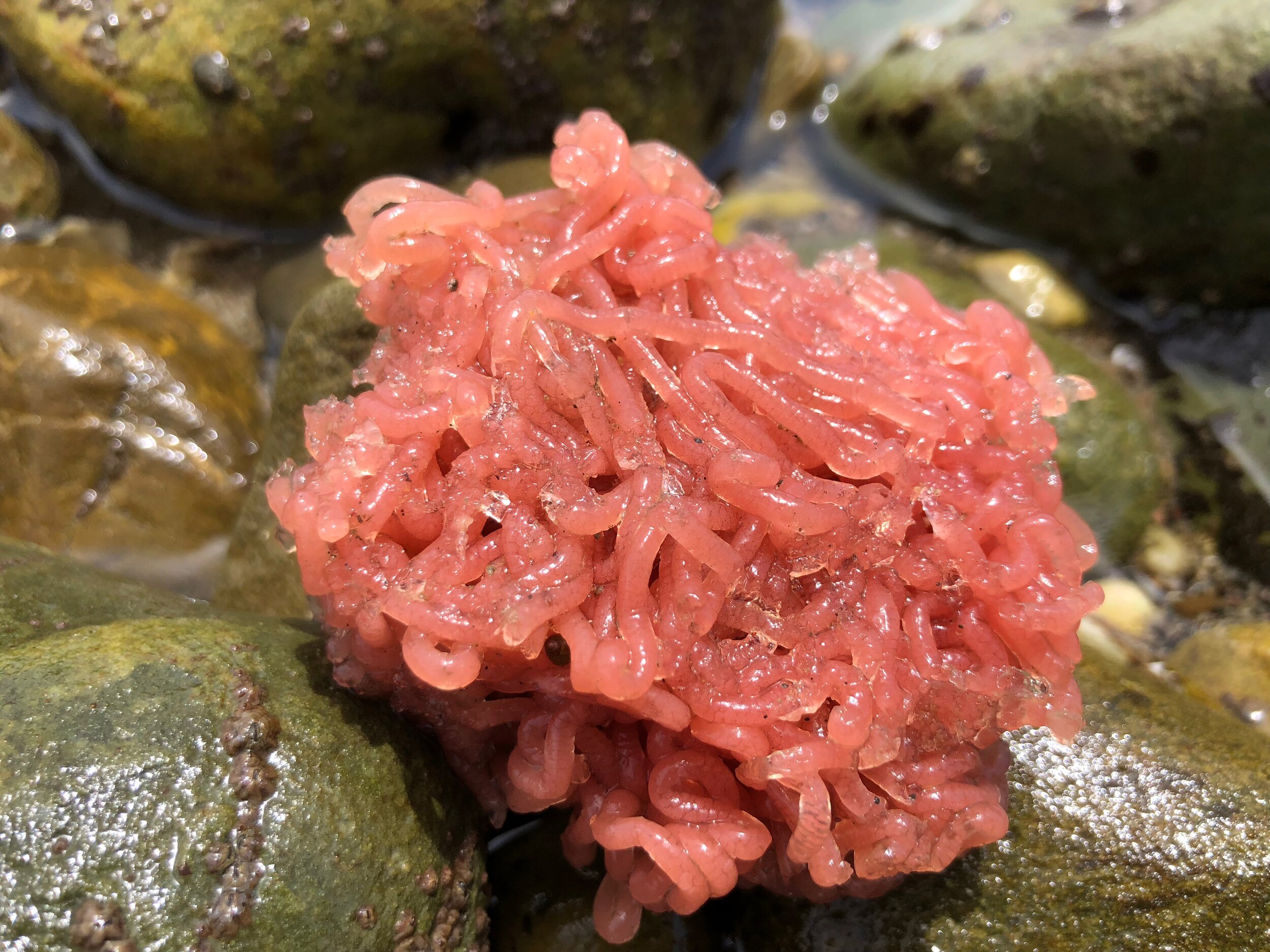
Sea Hares
Sea hares are just plain weird and I love them for it. Named sea hares because they look like they have bunny ears, they are a type of sea slug—a generic term for gastropod mollusks that have evolved to have no exterior shell.
Okay, so what is going on with that face, you wonder?! Let’s start at the top and work our way down. The two bunny ear/antenna-looking protrusions on top of its head are “rhinophores,” which sense scent and taste, i.e. its nose. Right at the base of the rhinophores are tiny eyes; they do not really see objects so much as detect light and shade. And finally, we arrive at the bottom of the face with what looks like a face skirt or handlebar mustache situation—these are oral tentacles, used for sensing the world through scent, taste, and feel. There is a small mouth on the underside of its head.
Pictured here are black sea hares and California sea hares, both of which are herbivores and get their coloring from the food they eat. I’ll let you guess which eats brown seaweed and kelp and which eats red algae. The black sea hares are the largest sea slug, weighing up to 30 lbs! That’s one big blob.
Also pictured here is…sea hare eggs! Sea hare are hermaphrodites and lay eggs in gelatinous pink or yellow strings, so be on the lookout for what looks like old noodles!
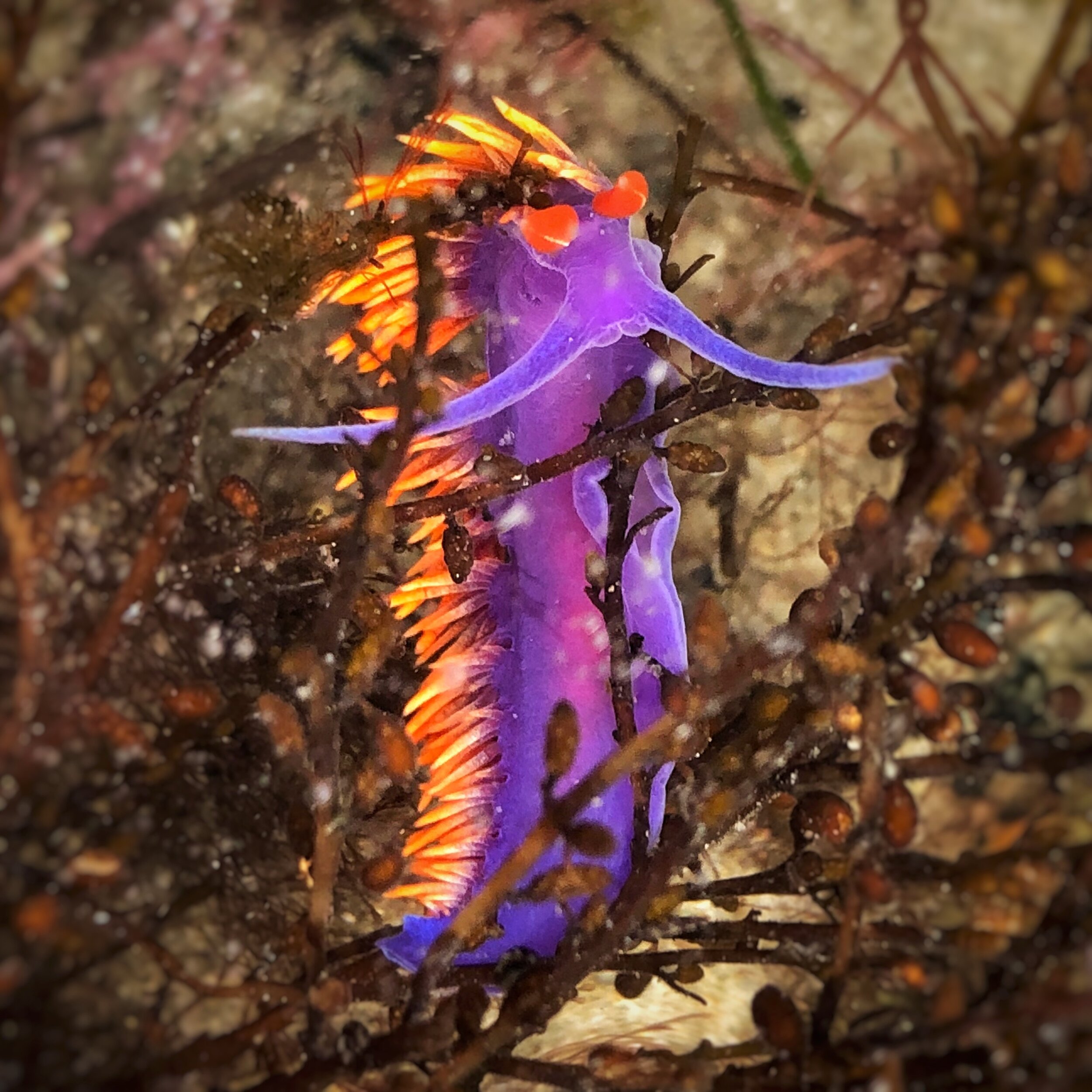

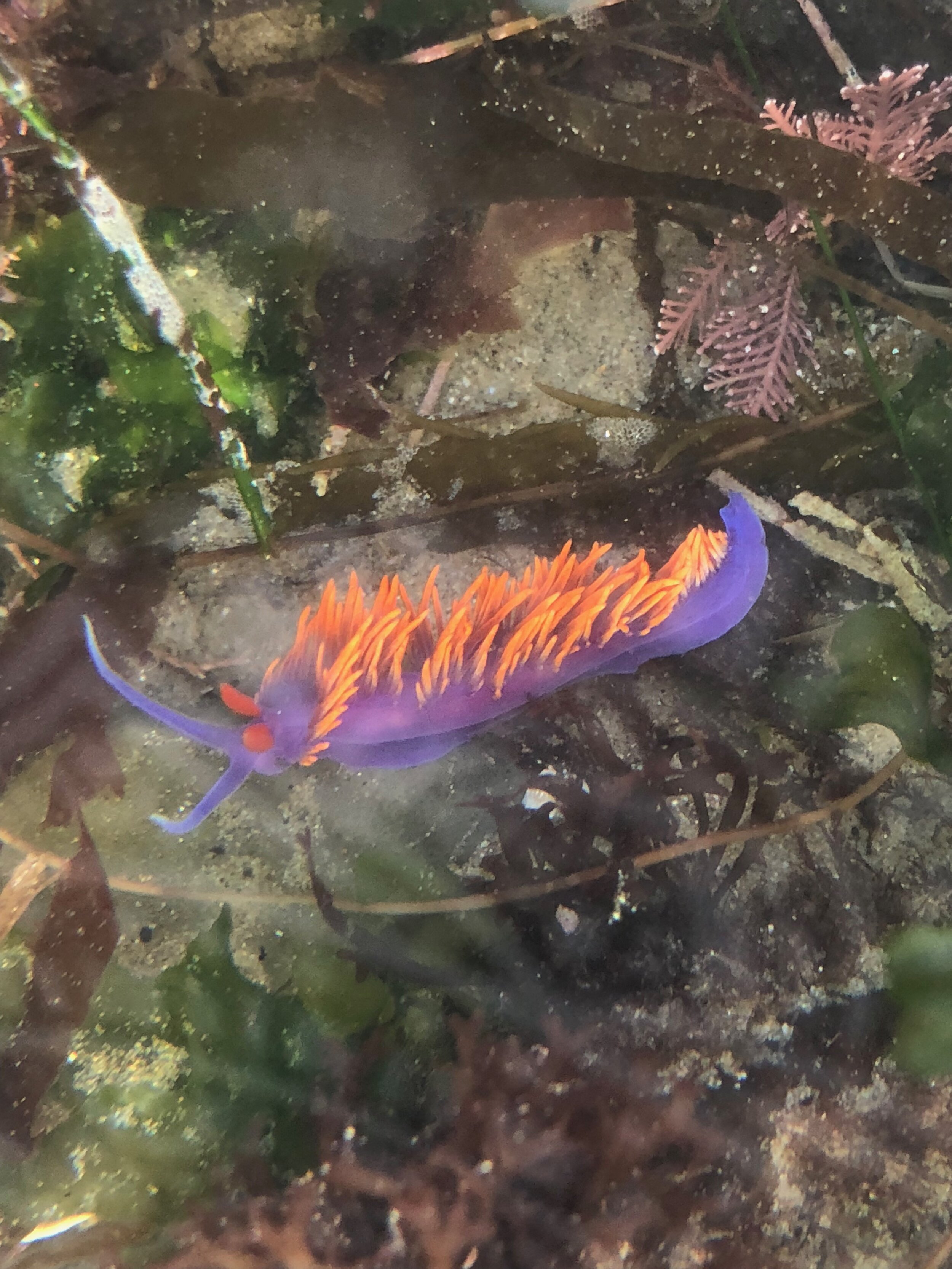
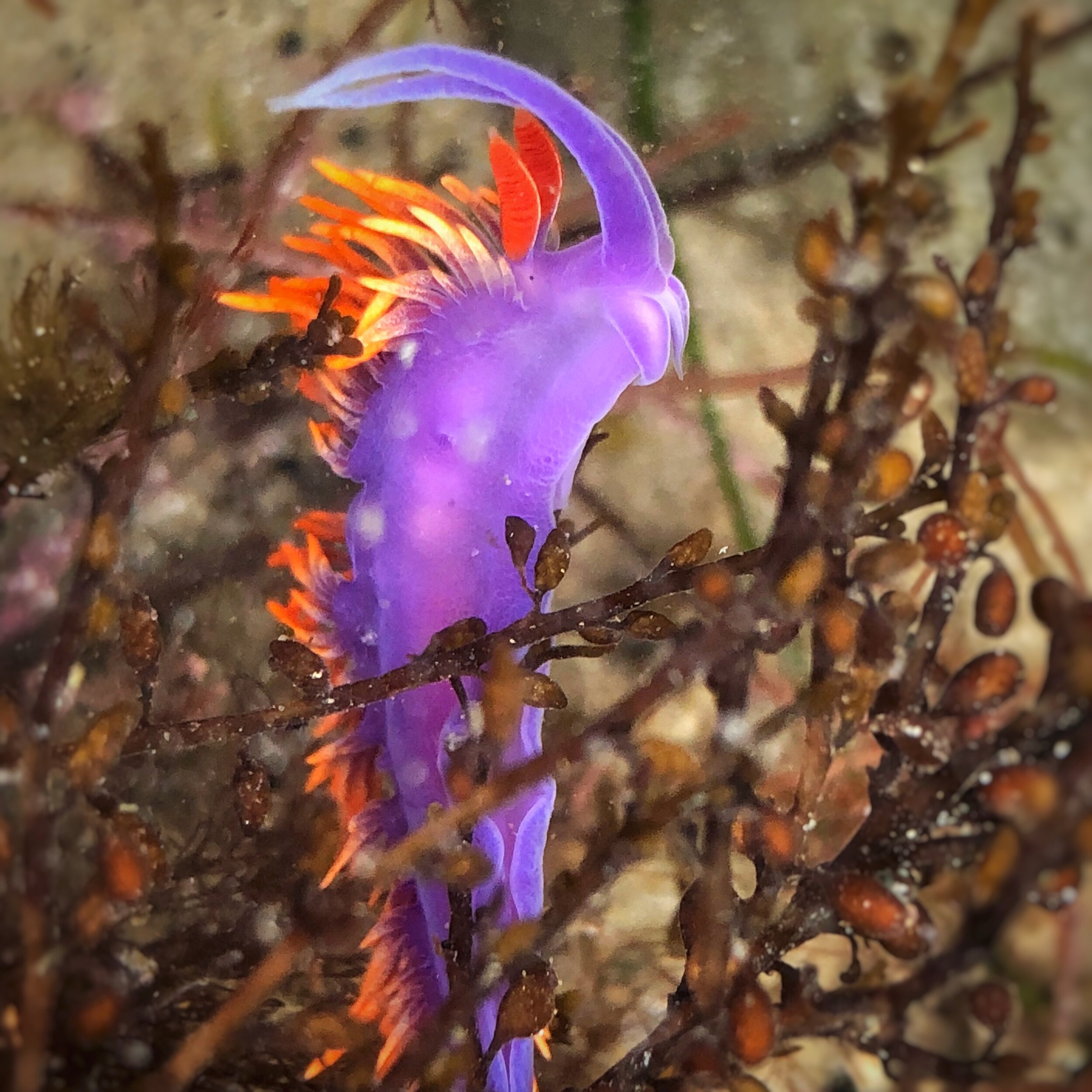
Nudibranchs
If you think these little guys bear a resemblance to sea hares, you’re right! They are also sea slugs! Their name comes from “nudi” (naked) and “branch” (gills). With that being said, can you guess what the orange tufts on its back are? Yep, the gills!
Nudibranchs are my favorite thing to find because they come in so many colors. There are over 3,000 species of nudibranchs in the world and they vary greatly in appearance. I do recommend you google some photos to see the diversity, it’s astounding! Pictured here is a Spanish shawl nudibranch, isn’t it gorgeous? I’ve found many species in Santa Barbara, but good luck finding them! While they are brilliantly colored, nudibranchs are SMALL. Typically, the ones I’ve found in Santa Barbara county have varied from about an inch to the size of a pinhead. They like to hang on to kelp, so the best approach to finding them is grabbing fresh kelp floating on the water and carefully looking over each leaf. It’s a painstaking process, but you’ll find a lot of cool stuff that way!

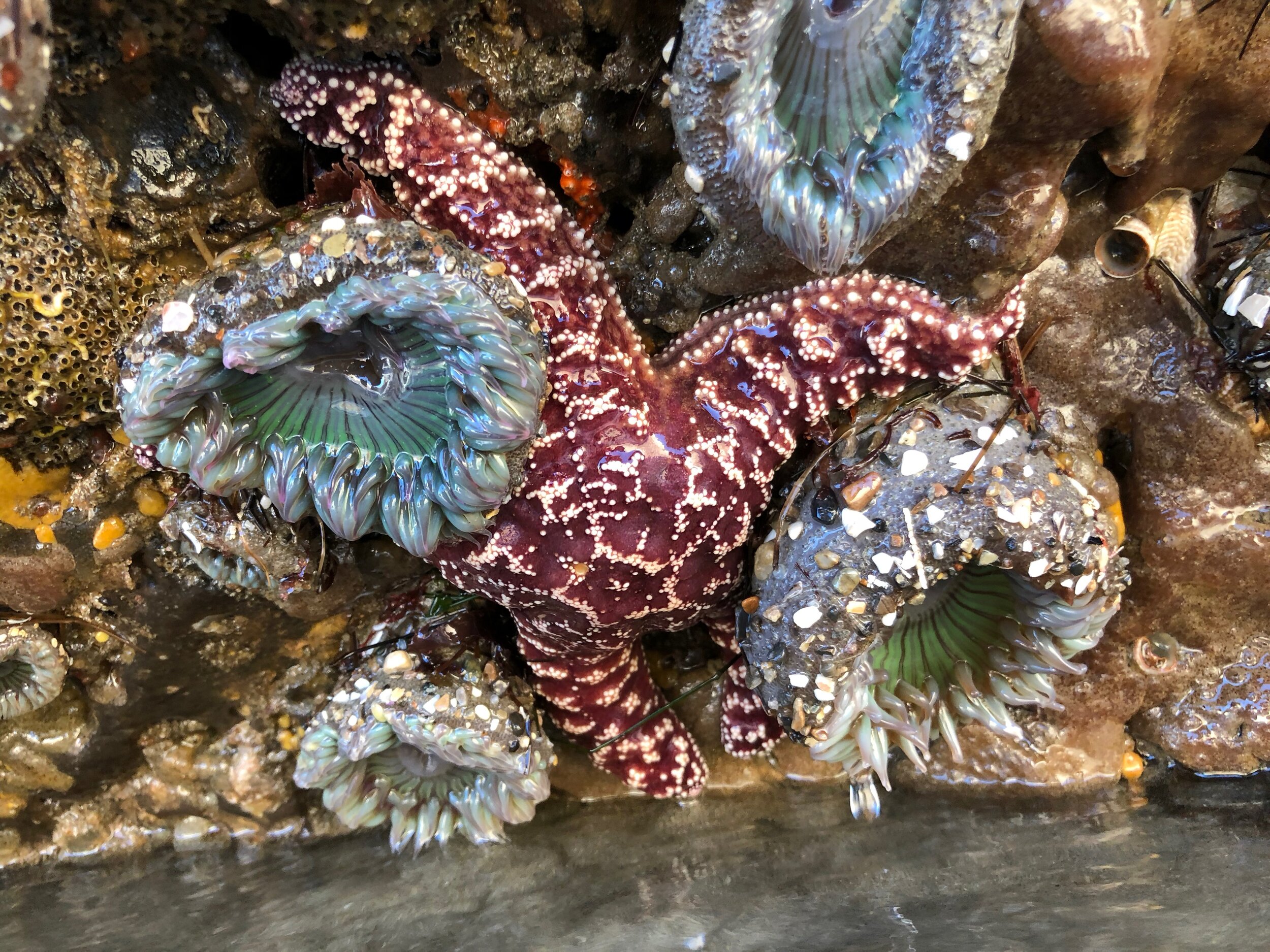
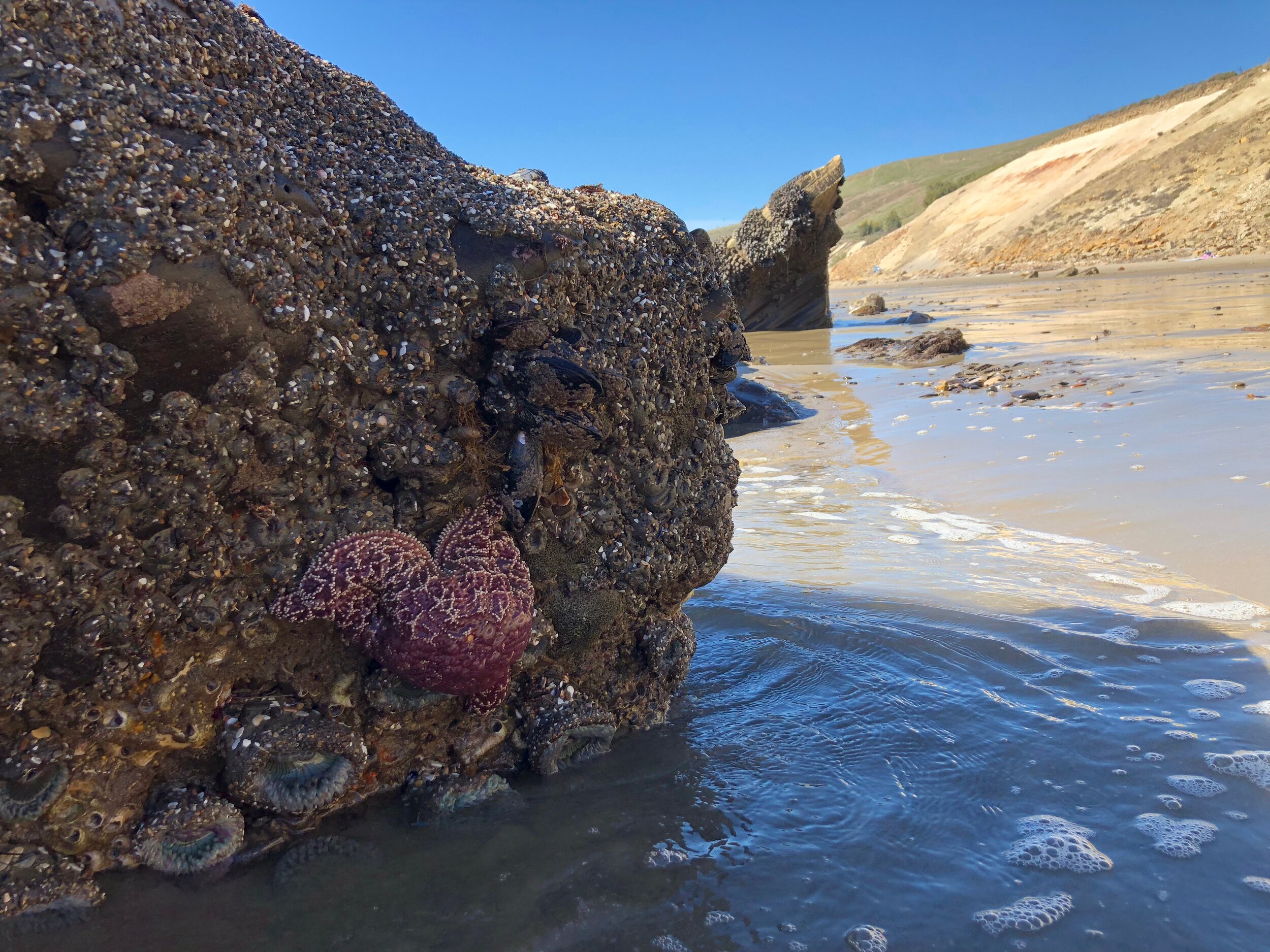
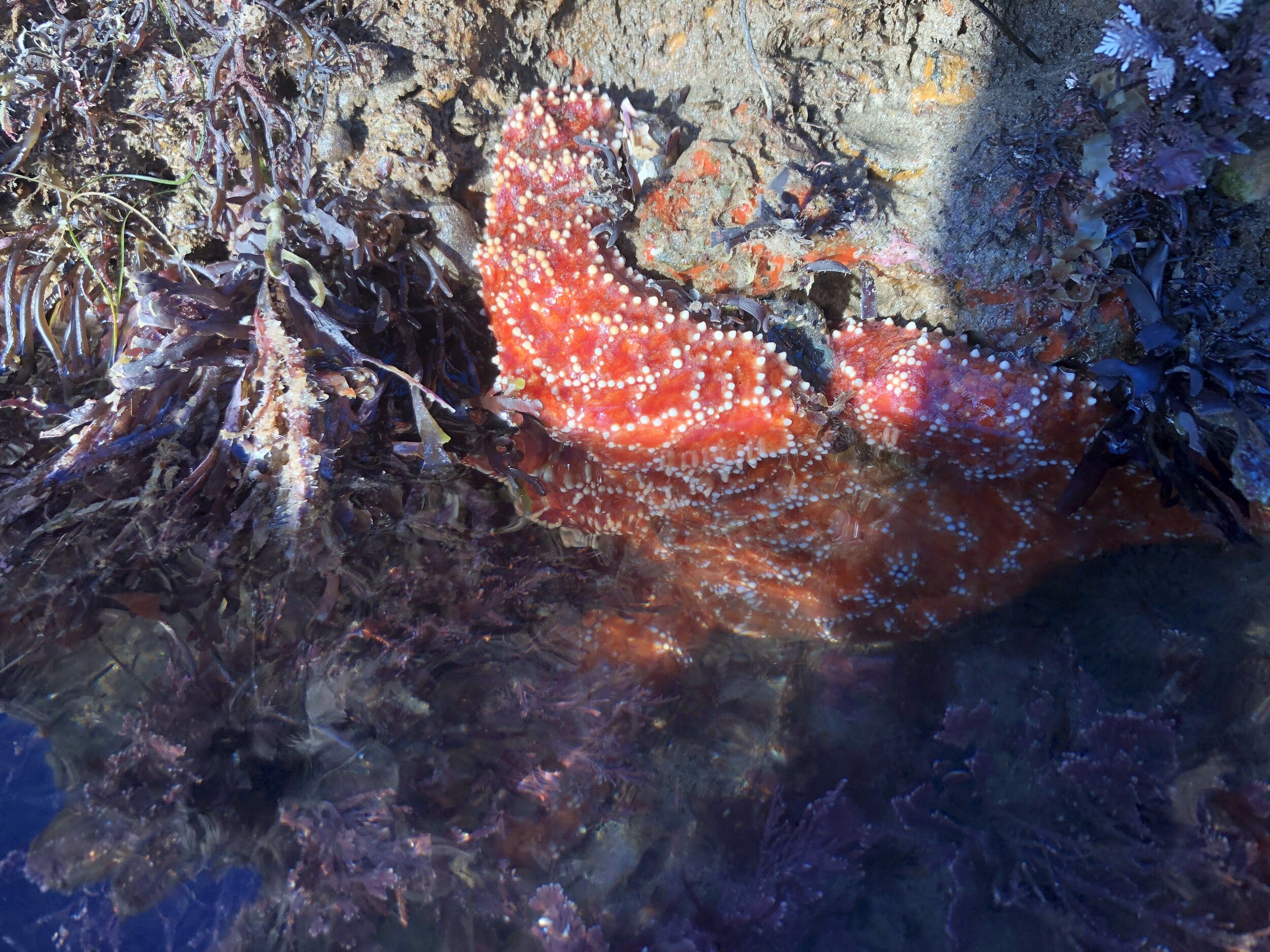
Sea stars
Sea stars are in the echinoderm family with sea cucumbers, brittle stars, sea urchin. They have radial symmetry, typically 5 arms, and their underside is covered in little tube feet, which they use to walk along the ocean floor and grab food. The number of arms can vary depending on the species and even within a species. Just like a lizard’s tail, sea stars can shed their arms to escape a predator and regenerate lost limbs.
But just when you thought body regeneration was cool, wait until you hear about this: Sea stars don’t have blood, they have a water vascular system! See the orange spot near the middle of the sea stars pictured here? All sea stars have that dot—it’s where water enters their vascular system. Because of this hydraulic system and their great number of tube feet, sea stars can outpower their favorite foods (mollusks, clams, etc) over time. They will patiently pull a clam open until the clam’s muscles get tired. Once a slit is open, the sea star can actually invert its stomach through the crack and into the clam, where it will release enzymes to break down the clam’s body. The sea star can then suck its stomach back in along with the partially digested clam too.
If you walk on the beach and notice a line on large rocks above which there are many clams and mollusks and none below, you’re looking at concrete evidence of a sea star’s impact on its environment. Sea stars cannot tolerate prolonged periods out of the water, so they won’t venture too far past a certain threshold. That threshold becomes an evident cut-off—any shelled creature that can withstand living above this threshold is out of reach from the voracious sea star!
Sea urchins
Sea urchins fall in the echinoderm family, along with sea stars. It may be hard to tell, but sea urchins have fivefold symmetry, just like sea stars!
The spines are jointed and can move freely. If you find these guys, try touching them (gently) with two fingers. They react to touch by moving their spine toward the touchpoint, which makes sense as a defense mechanism. Move all your swordsmen to the point of attack! But from a human’s perspective, it feels less like a threat and more like a weak finger hug.
Sea urchins also have dozens of tube feet that they can retract or extend as needed (none are visible in the photo above) via a water vascular system, again just like sea stars. They look like thin tentacles with one sucker at the end. They use these tube feet to grab pieces of algae floating by in the water and bring it from foot to foot to the mouth, bucket brigade style. Where is the mouth? Right in the center on the underside.
Fun fact: Sea otters love to eat these purple sea urchins so much, their teeth and bones often have a lavender hue to them!
Tips
What is the best time to visit tidepools?
For the best tidepool experience, you’ll want to visit the beach at low tide. But when is low tide? If you want a quick refresher on how tides work, you can visit my post How Do Tides Work? But the TL;DR: Do yourself a favor and download the NOAA Buoy and Tide Data app. I’ve gotten into the habit of checking the tides every morning (like the weather). If I notice a particularly low tide at a convenient time (usually around the full moon), I’ll make sure to plan a tide pool visit that day!
Safety (yours and that of the animals)
There’s not a lot of animals in Southern California waters that would be seriously dangerous to humans, but that’s not to say they can’t hurt you. My philosophy as a beachgoer is to look with your eyes, not with your hands. That way I help keep animals safe AND I don’t end up in a viral meme “YouTuber unknowingly takes video holding the world’s deadliest octopus.” Seriously, you don’t want to be that person.

